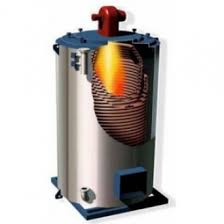
Feb . 18, 2025 12:31 Back to list
Oil-fired hot water boiler
The hot water boiler system diagram is an essential aspect for those looking to install or understand the workings of a boiler system. A pivotal component of residential and commercial spaces, these systems ensure a continuous supply of hot water for heating purposes. At the heart of every heating solution, the boiler system acts as the cornerstone, facilitating the transition from cold water to hot water seamlessly.
The expansion tank is another indispensable part of the hot water boiler system. As water heats, it expands, and the expansion tank accommodates this change in volume, preventing over-pressurization and potential system failure. This component ensures the stability and longevity of the boiler system. Control systems contribute significantly to the hot water boiler system's efficiency. These sophisticated technological tools allow users to set temperatures, monitor system health, and even shut down the system remotely in case of an emergency. Modern control systems leverage smart technology integration, providing users with real-time updates and the ability to adjust settings for optimal energy use. The reliability and efficiency of a hot water boiler system depend heavily on regular maintenance. Routine checks of the heat exchanger for fouling, inspection of valves for proper operation, and flushing the piping to prevent mineral buildup are crucial for sustained system performance. Additionally, annual professional inspections ensure that the system operates at peak efficiency and that all safety protocols are adhered to. Boiler systems are subject to local codes and regulations, which dictate specific installation and operation requirements. Compliance with these guidelines is imperative, as it guarantees safety, efficiency, and prolonged system life. It’s advisable to consult certified professionals who demonstrate expertise in installing and servicing such systems, thereby ensuring adherence to all local building regulations and safety standards. In conclusion, understanding the hot water boiler system diagram is fundamental for anyone involved in the installation, maintenance, or use of these systems. By grasping the function and interrelation of each component, individuals can better appreciate the engineering marvel that provides warmth and comfort, ensuring that every part of this sophisticated system works in harmony to deliver a reliable and efficient hot water supply. Being well-versed in these components not only enhances personal knowledge but also elevates the capability to make informed decisions regarding system upgrades, repairs, and energy use optimization.


The expansion tank is another indispensable part of the hot water boiler system. As water heats, it expands, and the expansion tank accommodates this change in volume, preventing over-pressurization and potential system failure. This component ensures the stability and longevity of the boiler system. Control systems contribute significantly to the hot water boiler system's efficiency. These sophisticated technological tools allow users to set temperatures, monitor system health, and even shut down the system remotely in case of an emergency. Modern control systems leverage smart technology integration, providing users with real-time updates and the ability to adjust settings for optimal energy use. The reliability and efficiency of a hot water boiler system depend heavily on regular maintenance. Routine checks of the heat exchanger for fouling, inspection of valves for proper operation, and flushing the piping to prevent mineral buildup are crucial for sustained system performance. Additionally, annual professional inspections ensure that the system operates at peak efficiency and that all safety protocols are adhered to. Boiler systems are subject to local codes and regulations, which dictate specific installation and operation requirements. Compliance with these guidelines is imperative, as it guarantees safety, efficiency, and prolonged system life. It’s advisable to consult certified professionals who demonstrate expertise in installing and servicing such systems, thereby ensuring adherence to all local building regulations and safety standards. In conclusion, understanding the hot water boiler system diagram is fundamental for anyone involved in the installation, maintenance, or use of these systems. By grasping the function and interrelation of each component, individuals can better appreciate the engineering marvel that provides warmth and comfort, ensuring that every part of this sophisticated system works in harmony to deliver a reliable and efficient hot water supply. Being well-versed in these components not only enhances personal knowledge but also elevates the capability to make informed decisions regarding system upgrades, repairs, and energy use optimization.
Share
Latest News
-
Commercial Oil Fired Steam Boilers with GPT-4 Turbo AI
NewsAug.04,2025
-
Coal Fired Thermal Oil Boiler with GPT-4 Turbo Efficiency
NewsAug.03,2025
-
Commercial Steam Boilers for Sale - AI Optimized Efficiency
NewsAug.02,2025
-
Efficient Biomass Fired Hot Water Boiler | AI Heating Solution
NewsAug.01,2025
-
High-Efficiency Gas Thermal Oil Boilers | HPT Models
NewsJul.31,2025
-
Oil Fired Hot Water Boilers Sale - High Efficiency & Affordable
NewsJul.31,2025
Related PRODUCTS
Copyright © 2025 HEBEI HONGZE BOILER MANUFACTURING CO., LTD. All Rights Reserved. Sitemap | Privacy Policy






















